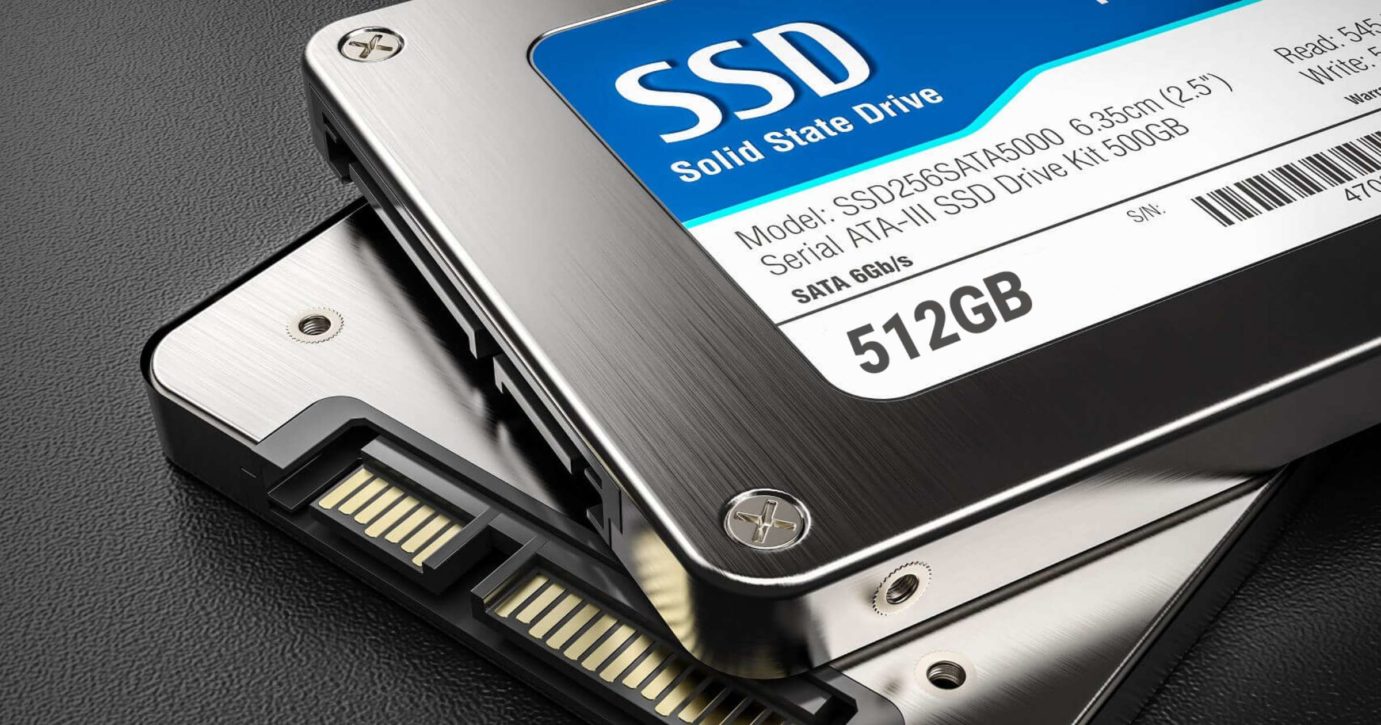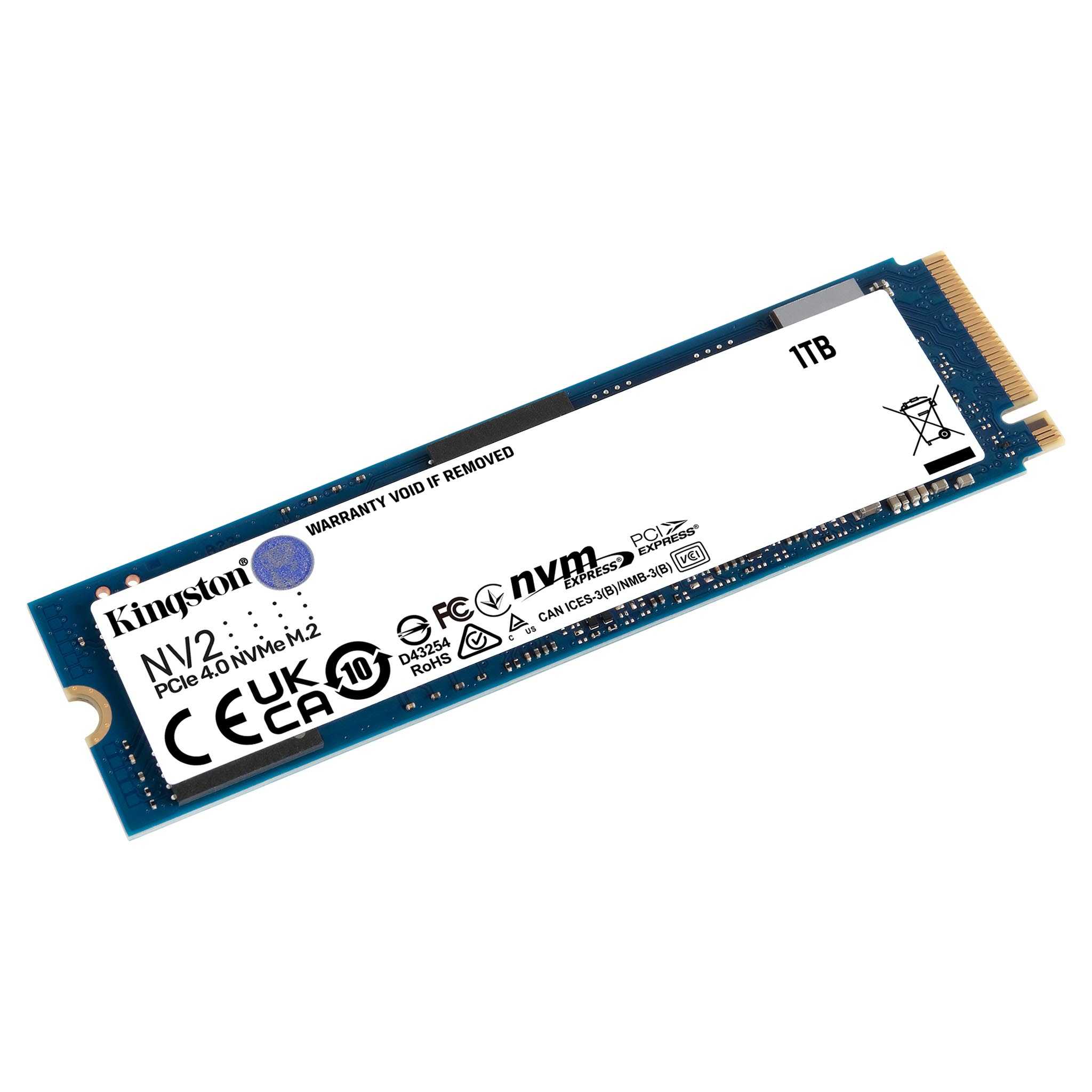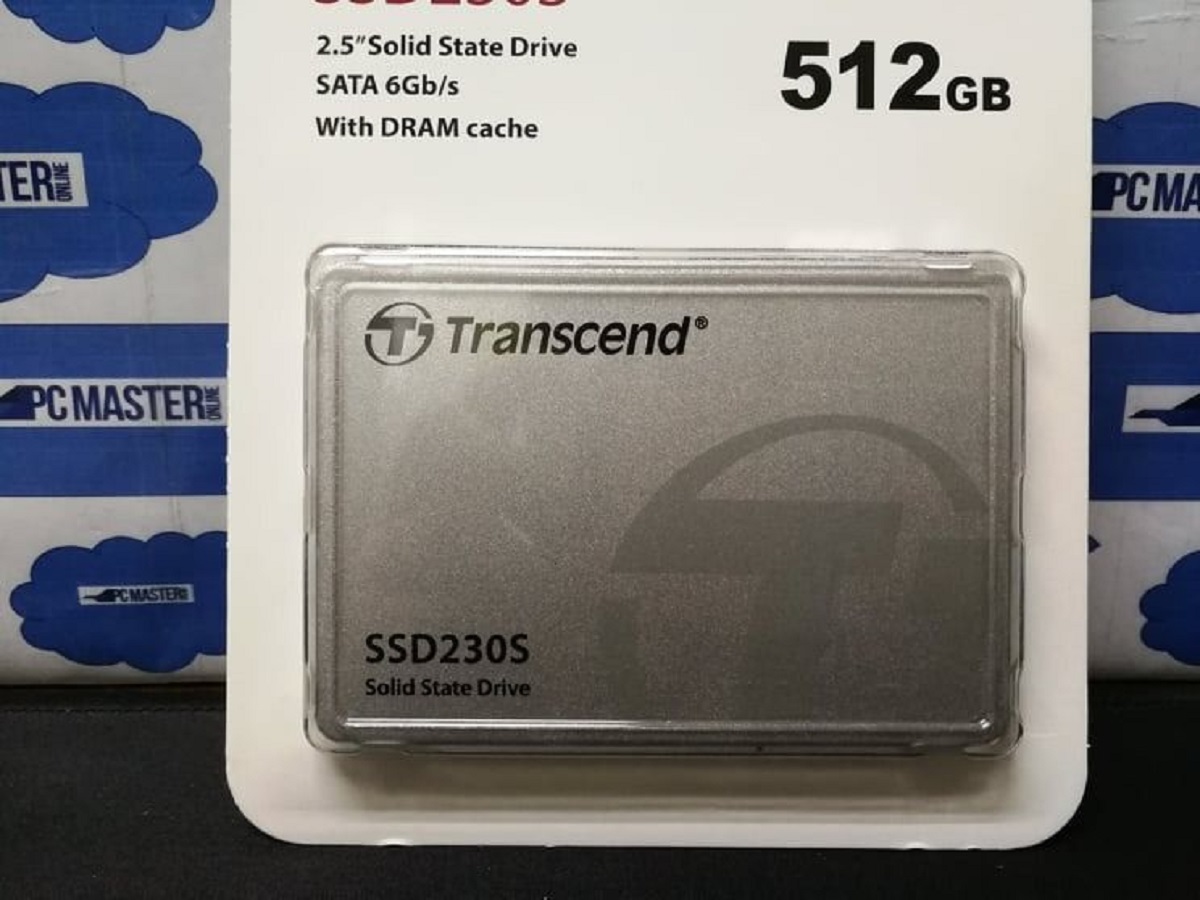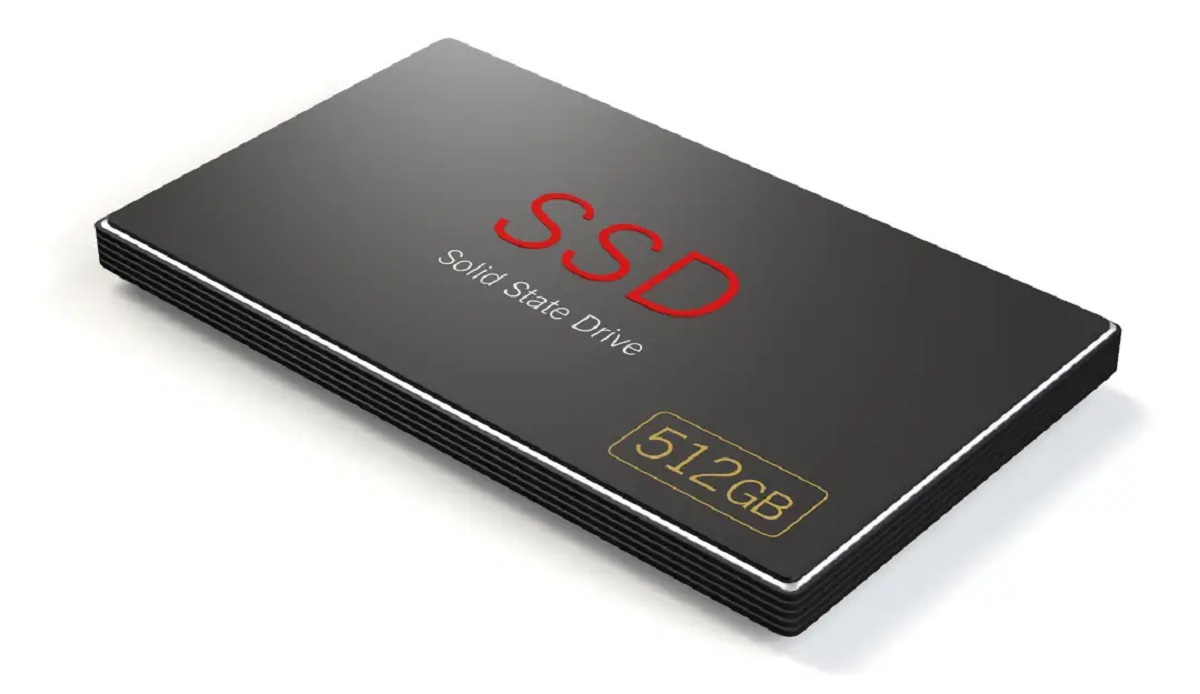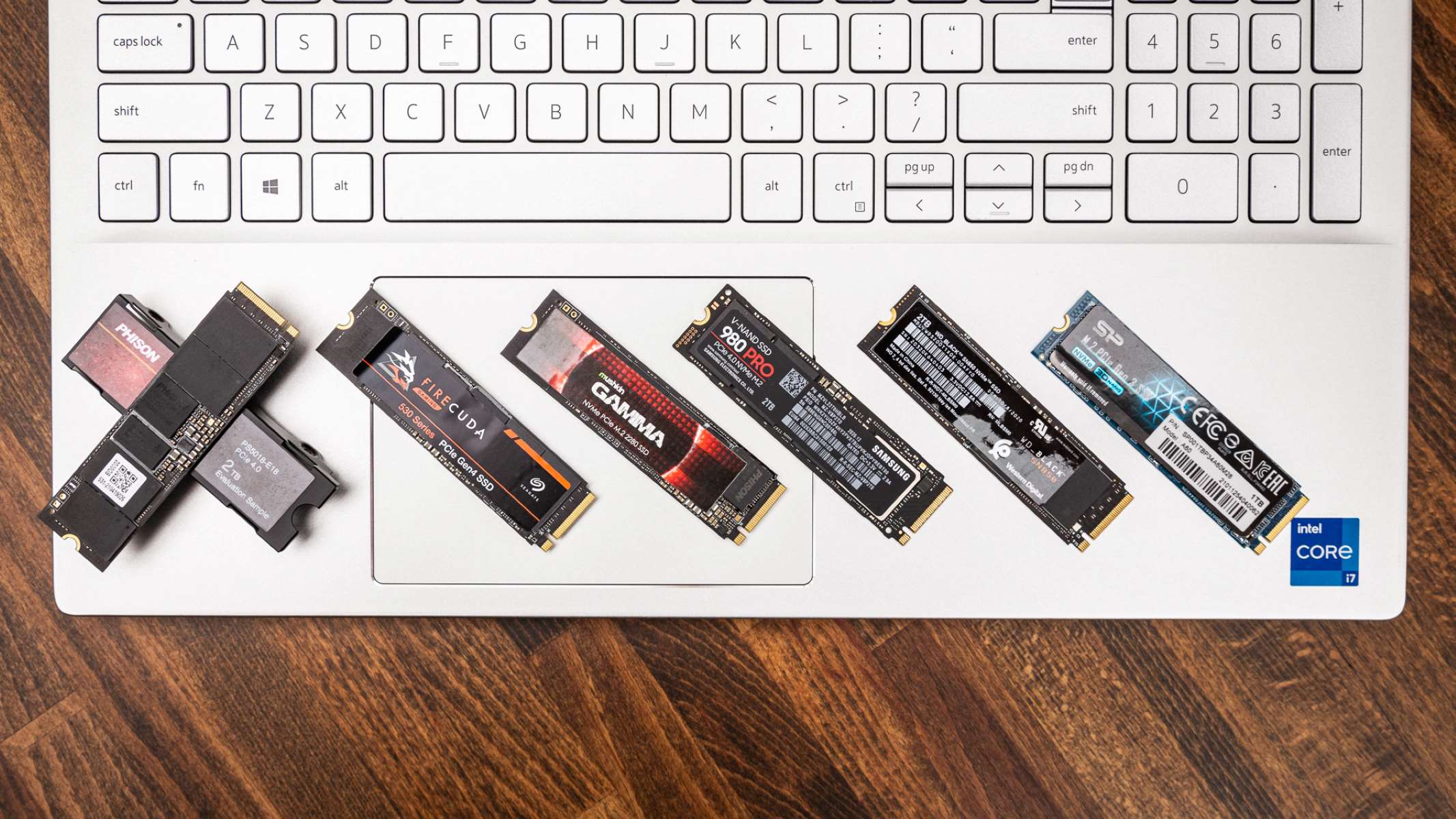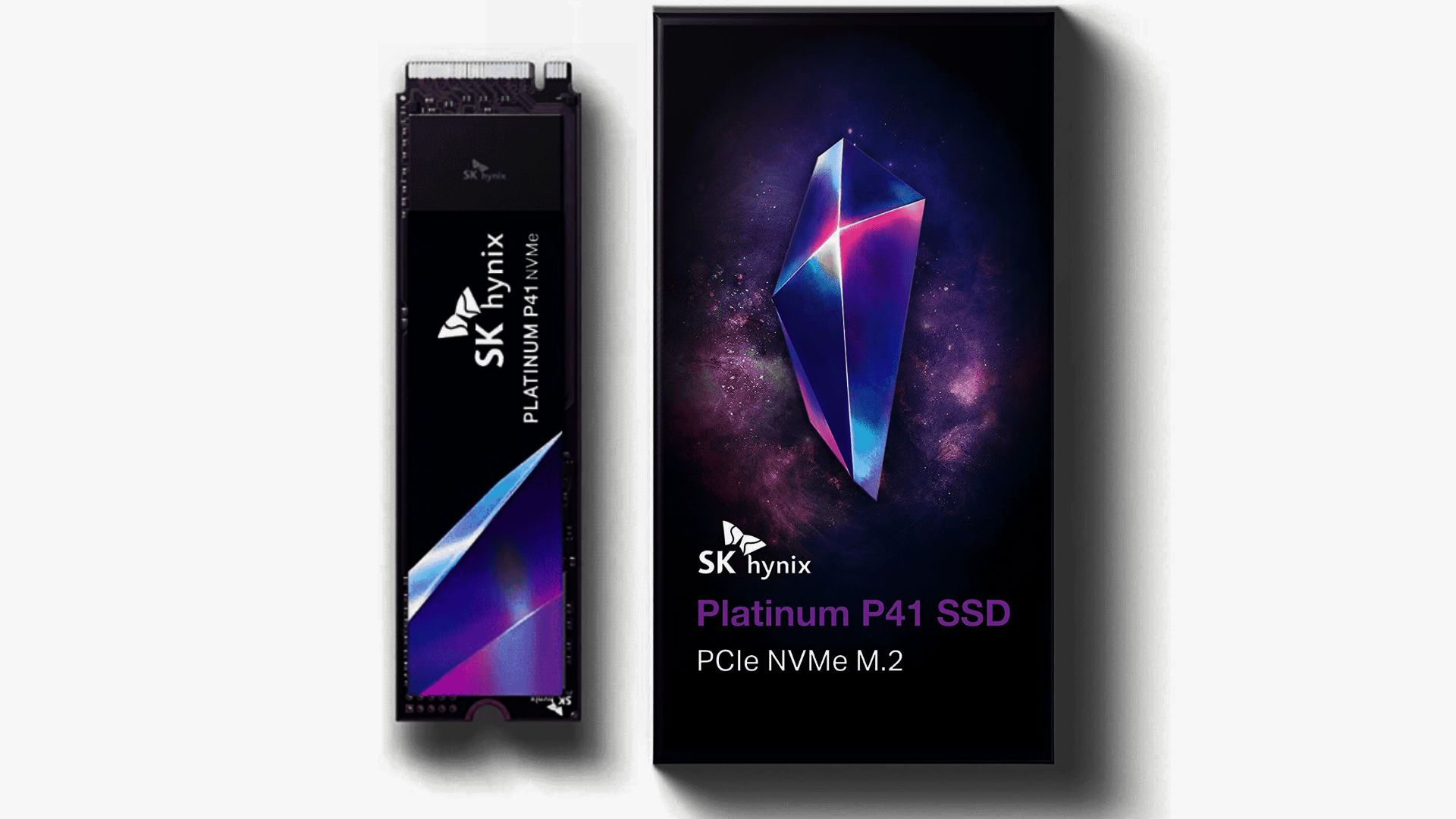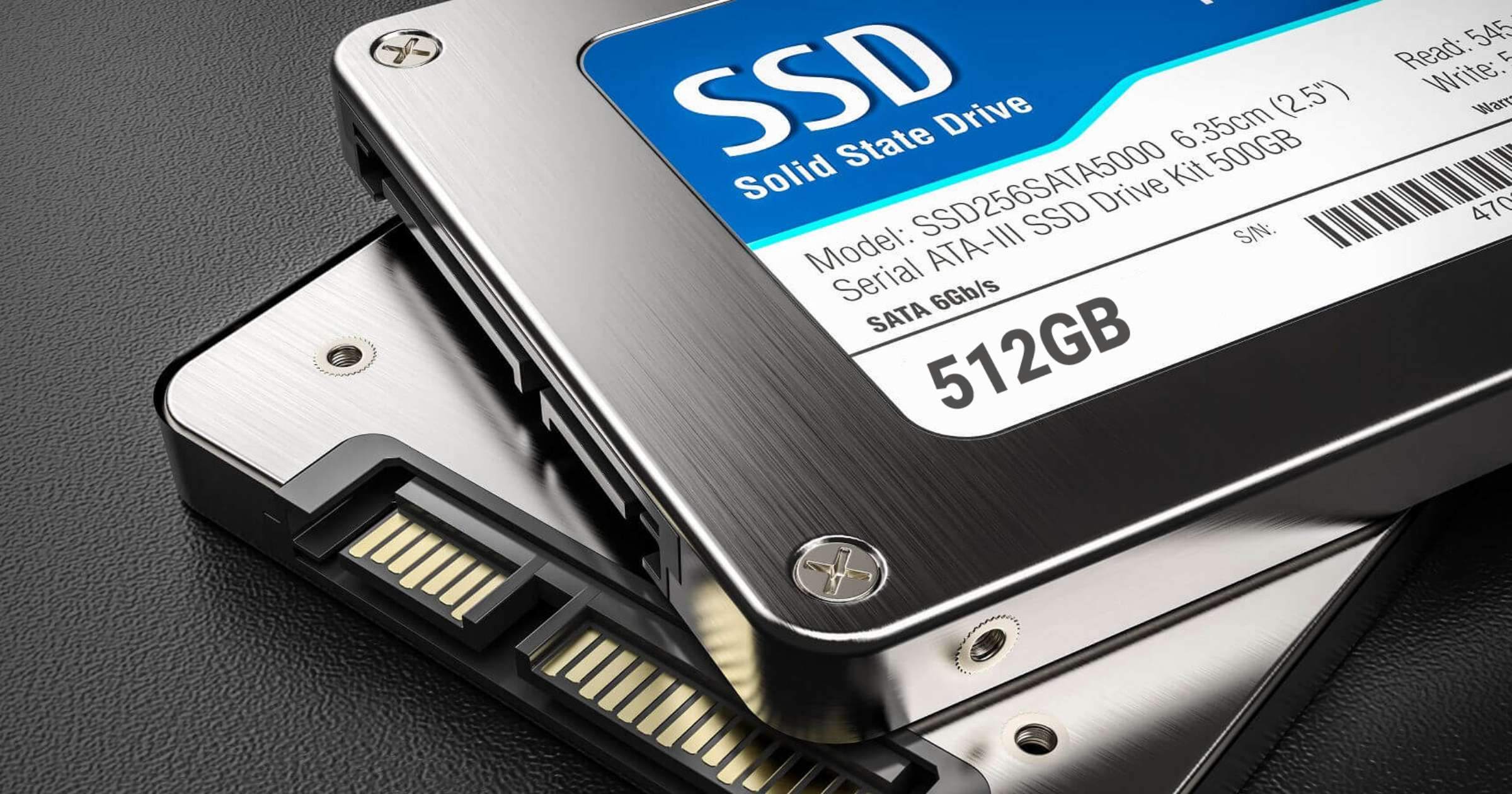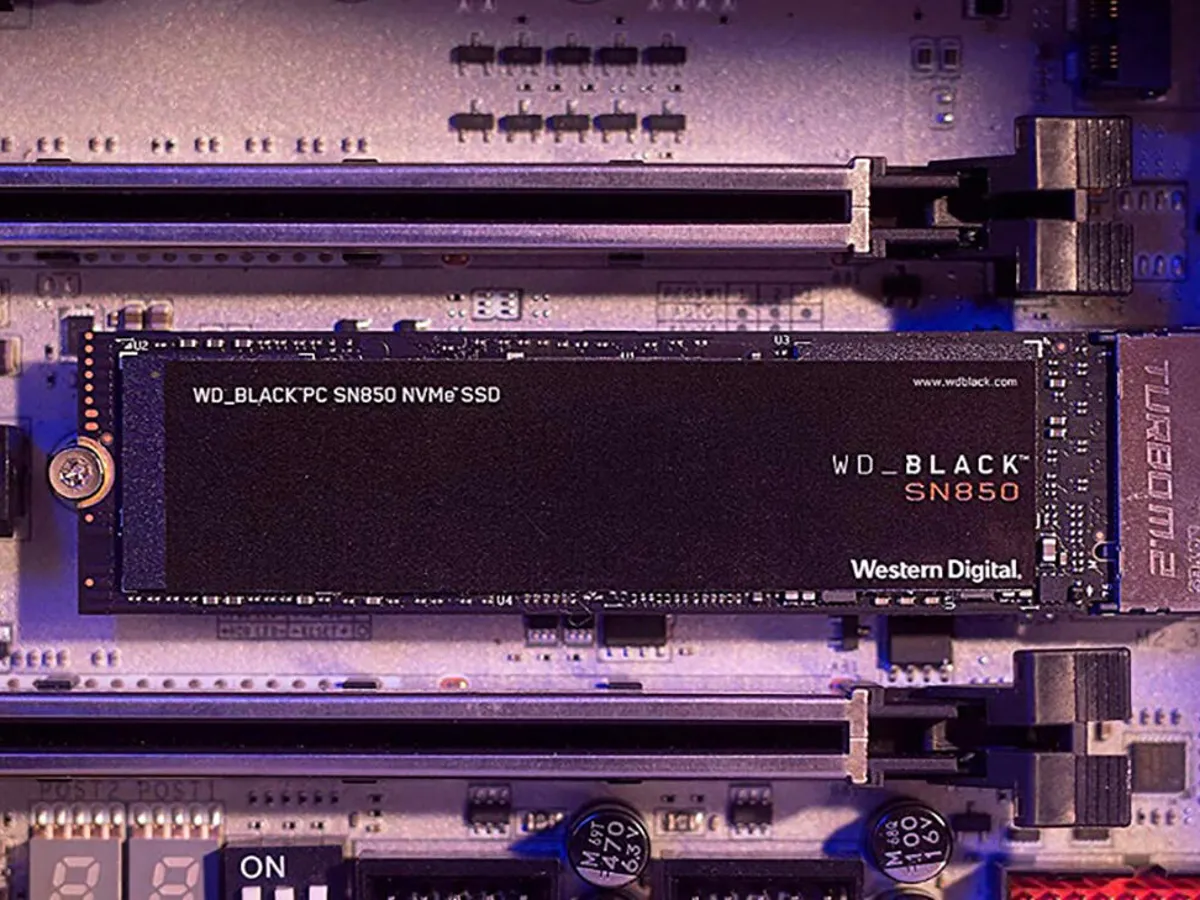Introduction
A solid state drive (SSD) is a type of storage device that is commonly used in modern computers and laptops. Unlike traditional hard disk drives (HDDs), which use spinning disks and mechanical components to store and retrieve data, SSDs are based on flash memory technology. This makes them faster, more reliable, and more durable.
SSDs come in various storage capacities, such as 128GB, 256GB, and even larger options like 1TB and beyond. One popular choice for many users is the 512GB SSD, which offers a balance between affordability and ample storage space.
Understanding the storage capacity of an SSD is crucial for planning your data storage needs. Whether you are a student, a professional, or a casual user, knowing how much data you can store on a 512GB SSD can help you make informed decisions and ensure that you have enough space for your files, media, and applications.
In this article, we will explore the capacity of a 512GB SSD in terms of file types and sizes, shedding light on how much data it can hold in various scenarios. So, if you are considering upgrading to a 512GB SSD or just curious about its capabilities, read on to find out the answer to the question: How much data can a 512GB solid state drive hold?
What is a Solid State Drive (SSD)?
A solid state drive (SSD) is a type of storage device that has gained popularity in recent years due to its superior performance and reliability compared to traditional hard disk drives (HDDs). Unlike HDDs, which use spinning disks and mechanical components to read and write data, SSDs rely on non-volatile flash memory.
This flash memory technology allows SSDs to access data quickly, resulting in faster boot times, application launches, and file transfers. Additionally, SSDs have no moving parts, making them more resistant to physical shock and less prone to mechanical failure.
SSDs are available in various form factors, including 2.5-inch drives for laptop and desktop computers, M.2 drives for ultrabooks and compact devices, and PCIe drives for high-performance applications. They can be installed as the primary storage device or used as secondary storage alongside an HDD to create a hybrid storage solution.
One of the key advantages of SSDs is their ability to improve overall system responsiveness. With faster read and write speeds, tasks such as opening large files, running intensive applications, and booting up your computer can be completed significantly faster compared to using an HDD.
Furthermore, SSDs consume less power than traditional HDDs, which can lead to increased battery life for laptops and reduced energy consumption for desktop computers. This not only benefits the user in terms of portability and environmental impact but also contributes to a quieter computing experience, as SSDs do not produce any noise from spinning disks.
In summary, a solid state drive is a storage device that utilizes flash memory technology to provide faster access to data, increased reliability, and lower power consumption compared to traditional hard disk drives. With their numerous advantages, SSDs have become a popular choice for users seeking improved performance and efficiency in their computing devices.
Understanding Storage Capacity
Storage capacity refers to the amount of data that can be stored on a storage device, such as a solid state drive (SSD). It is an essential factor to consider when choosing the right SSD for your needs. Understanding how storage capacity is measured and the factors that affect it can help you make an informed decision.
When it comes to measuring storage capacity, there are two primary systems in use: decimal-based and binary-based. The decimal-based system uses powers of 10, where each unit represents 1,000 bytes. For example, 1 kilobyte (KB) is equal to 1,000 bytes, 1 megabyte (MB) is equal to 1,000 kilobytes, and so on. On the other hand, the binary-based system uses powers of 2, where each unit represents 1,024 bytes. In this system, 1 kilobyte (KB) is equal to 1,024 bytes, 1 megabyte (MB) is equal to 1,024 kilobytes, and so on.
It is important to note that manufacturers often advertise storage capacity using the decimal-based system, whereas the operating system and file systems use the binary-based system. This can result in a difference between the advertised capacity and the actual available capacity on the SSD. For example, a 512GB SSD in the decimal-based system would be approximately 512 billion bytes, while in the binary-based system, it would be around 476.8 gibibytes (GiB).
Several factors can affect the actual usable capacity of an SSD. First, a portion of the storage space is reserved for the SSD’s firmware and other system-level functions. This space is not available for user data storage. Second, the formatting and file system overhead also reduce the usable capacity. File systems, such as FAT32 or NTFS, require a certain amount of space for metadata and structural information. Finally, some SSDs may use a technique called overprovisioning, where a portion of the storage capacity is intentionally left unused to improve performance and endurance.
To accurately determine the usable storage capacity of an SSD, it is recommended to refer to the product specifications provided by the manufacturer. These specifications will typically indicate the total capacity and the usable capacity after accounting for the factors mentioned above.
With a clear understanding of storage capacity measurements and the factors that affect it, you can make an informed decision when selecting an SSD that meets your data storage needs.
File Sizes and Measurements
Before delving into how much data a 512GB solid state drive (SSD) can hold, it’s important to have a basic understanding of file sizes and their measurements.
In the digital world, data is measured in bytes. A byte is the fundamental unit of digital information and is represented by a series of 0s and 1s. It takes one byte to represent a single character. However, files on our devices can range from text documents to high-resolution images and videos, each requiring a different amount of storage space.
Here are some common file size measurements:
- Kilobyte (KB): Approximately 1,000 bytes. This measurement is often used for small text files, simple documents, and basic images.
- Megabyte (MB): Approximately 1,000 kilobytes or 1,000,000 bytes. This unit is commonly used for larger files such as high-quality images, music tracks, and short videos.
- Gigabyte (GB): Approximately 1,000 megabytes or 1,000,000,000 bytes. This measurement is commonly used for larger files, such as high-definition videos, complex software applications, and larger collections of documents.
- Terabyte (TB): Approximately 1,000 gigabytes or 1,000,000,000,000 bytes. This unit is typically used for massive data storage, such as multimedia libraries, extensive databases, and enterprise-level storage solutions.
It’s important to note that file sizes can vary depending on the format, compression, quality, and content of the data. For example, a high-resolution image will have a larger file size compared to a lower-resolution version of the same image. Similarly, the length and quality of a video will affect its file size. Therefore, it’s crucial to consider these factors when estimating the amount of data you can store on a 512GB SSD.
In the next section, we will explore how much data can be stored on a 512GB SSD in various file types.
How much data can a 512GB SSD hold?
Now, let’s dive into the main question: How much data can a 512GB solid-state drive (SSD) hold? The answer varies depending on the file types and sizes you are considering.
Text Documents: Text documents, such as Word documents or PDF files, are usually small in size. On average, a text document may take up around 100 kilobytes (KB) to 1 megabyte (MB) of space. With a 512GB SSD, you can store thousands, if not millions, of text documents.
Images: The size of image files can vary significantly depending on the resolution and format. A high-quality JPEG image may range from a few hundred kilobytes to several megabytes, while RAW image files can be larger, often exceeding 10 or 20 megabytes. With a 512GB SSD, you can store thousands of high-quality images.
Music Files: Similarly, the size of music files depends on the format and quality. On average, a typical MP3 song may range from 3 megabytes to 6 megabytes, while lossless formats like FLAC can take up more space, often exceeding 20 or 30 megabytes per song. With a 512GB SSD, you can store a vast collection of music, ranging from hundreds to tens of thousands of songs.
Videos: The size of video files can vary greatly depending on factors such as resolution, format, and compression. A high-definition video may range from a few hundred megabytes to several gigabytes. For example, a 1080p video might be around 1-2 gigabytes, while a 4K video can easily exceed 10 or even 20 gigabytes. With a 512GB SSD, you can store a substantial number of videos, depending on their duration and quality.
Games: The size of computer games can vary greatly, with some games taking up only a few gigabytes and others occupying over 100 gigabytes. On average, a modern game can range from 20 to 50 gigabytes. With a 512GB SSD, you can store a decent number of games, but it’s important to consider that larger games can quickly fill up the available space.
These are just a few examples of how much data you can store on a 512GB SSD. It’s crucial to consider the file types and sizes before estimating the number of files you can accommodate. Additionally, keep in mind that the operating system and other system files will also consume a portion of the total storage capacity.
Understanding the storage requirements of different file types will help you plan and manage your data effectively on a 512GB SSD.
Text Documents
Text documents, such as Word documents, PDFs, or plain text files, are commonly used for various purposes, including written assignments, reports, or personal notes. The size of text documents can vary depending on the content and formatting, but they are generally smaller compared to other file types.
On average, a text document can range from 100 kilobytes (KB) to 1 megabyte (MB) in size. For example, a simple one-page Word document might only take up a few kilobytes, while a lengthier document with images and complex formatting could be several megabytes in size.
With a 512GB solid-state drive (SSD), you can store an extensive collection of text documents. Let’s assume an average file size of 100KB for text documents. In this case, you could store thousands, or even millions, of text documents on your 512GB SSD.
Text documents are typically compact, so you can comfortably store a vast number of them without worrying about running out of storage space. Whether you’re a student, a professional writer, or someone who enjoys keeping personal records, a 512GB SSD should provide more than enough capacity for your text document needs.
It’s worth noting that the actual number of text documents you can store on a 512GB SSD may vary depending on the total space consumed by the operating system and other system files. Additionally, if you have other large files or applications on your SSD, it will affect the available storage for text documents.
To make the most of your SSD’s storage capacity, it’s always a good idea to organize your text documents into folders or use cloud storage solutions to further extend your storage capacity. By efficiently managing your files, you can ensure easy access to your text documents and maximize the available space on your SSD.
In summary, a 512GB SSD provides ample storage capacity for storing thousands, if not millions, of text documents. Whether you’re a student, professional, or avid writer, you can confidently rely on your SSD to hold all your important written work and personal notes.
Images
Images play a vital role in capturing moments, expressing creativity, and conveying information. Whether they are personal photographs, professional graphics, or web images, they add visual appeal to our lives and digital experiences. However, image files can vary significantly in terms of size, depending on factors such as resolution, format, and compression.
The size of an image file is generally measured in kilobytes (KB) or megabytes (MB). A simple low-resolution image might be around 100KB, while a high-quality photograph or a detailed graphic can easily exceed several megabytes.
With a 512GB solid-state drive (SSD), you can store a substantial number of images. Let’s assume an average file size of 1MB for images. This means you could store approximately 512,000 images on your 512GB SSD.
It’s important to note that the actual number of images you can store will depend on various factors, including the average file size, the resolution and quality of the images, and the presence of additional files and applications on your SSD. Large, high-resolution images will occupy more space compared to smaller or lower-resolution ones.
Another consideration is the image format. Some formats, like JPEG, utilize compression to reduce file size, while others, like TIFF, may result in larger file sizes due to less compression. It’s advisable to strike a balance between image quality and file size to make the most efficient use of your storage space.
In addition to storing images directly on your SSD, you can also utilize cloud storage services or external storage devices to further expand your image storage options. These solutions allow you to offload less frequently accessed images while still keeping them easily accessible whenever needed.
Whether you are an aspiring photographer, a graphic designer, or simply someone who enjoys capturing and collecting images, a 512GB SSD will provide ample space to store and organize your visual memories or professional work.
To optimize your image storage on an SSD, consider organizing them into folders based on categories, events, or projects. This will not only help you locate specific images quickly but also contribute to a more efficient use of your storage capacity.
In summary, a 512GB SSD offers significant storage capacity for images, allowing you to store a considerable number of photographs and graphics. With proper organization and file management, you can conveniently store, access, and enjoy your image collection without worrying about running out of space.
Music Files
Music holds a special place in our lives, offering entertainment, inspiration, and an emotional connection. Whether you’re a casual listener or an audiophile, having a collection of music files allows you to enjoy your favorite songs whenever and wherever you want. However, music files can vary greatly in size depending on factors such as format, quality, and length.
Most digital music files, such as MP3s or AACs, are compressed to reduce their file size while maintaining acceptable audio quality. As a result, the size of music files can range from a few megabytes (MB) to tens of megabytes or more, depending on the length and complexity of the song.
With a 512GB solid-state drive (SSD), you can comfortably store a vast collection of music. Let’s consider an average file size of 5 megabytes per song. With this estimate, you can store around 102,400 songs on your 512GB SSD.
However, it’s important to keep in mind that file sizes vary depending on the format and quality of the music files. Lossless formats like FLAC or WAV tend to have larger file sizes compared to more compressed formats like MP3 or AAC. Higher quality audio files, such as those with higher bitrates or sample rates, can also result in larger file sizes.
Additionally, it’s worth noting that your SSD’s capacity will be partially occupied by the operating system, system files, and other applications. So, the actual number of music files you can store may be slightly lower than the estimated figure.
If your music collection exceeds the storage capacity of your SSD, you can consider using external storage devices or cloud storage services to extend your storage options. These solutions allow you to access your music files remotely while keeping your favorite songs at your fingertips.
To make the most of your SSD’s storage capacity, you can also consider creating playlists, organizing your music by genre or artist, or storing only your most frequently listened-to songs on your SSD, while archiving the rest in other storage mediums.
In summary, a 512GB SSD offers ample storage space for music files, enabling you to store a substantial collection of songs. By considering file formats, audio quality, and organization strategies, you can make the most of your SSD’s storage capacity and enjoy your music library to the fullest.
Videos
Videos have become an integral part of our digital media landscape, providing entertainment, education, and a means of capturing and reliving special moments. However, video files can be considerably larger than other types of files due to their visual complexity and duration.
The size of a video file depends on various factors, including its resolution, format, compression, and length. High-definition videos, such as those in 1080p or 4K resolutions, tend to have larger file sizes compared to lower-resolution videos. Additionally, formats that utilize less compression, such as RAW or ProRes, usually result in larger file sizes than formats like MP4 or AVI, which use more efficient compression algorithms.
With a 512GB solid-state drive (SSD), you can store a significant number of videos. However, the actual number of videos will depend on their individual file sizes and the available space on your SSD, considering the operating system and other files already present.
Assuming an average video file size of 1 gigabyte (GB), you could store approximately 512 videos on your 512GB SSD. This estimation can vary widely based on the video quality, compression settings, and duration of the videos.
It’s important to consider the trade-off between video quality and file size when storing videos on your SSD. Higher-quality videos with larger file sizes will provide a more immersive and detailed viewing experience, but they will also consume more storage space. If storage capacity is a concern, you can opt for lower-resolution or compressed versions of the videos to save space while still enjoying your favorite content.
When your video collection exceeds the capacity of your SSD, you can utilize external storage devices or cloud storage services to expand your storage options. This allows you to access your videos remotely while still keeping your most frequently watched videos on your SSD for faster and convenient playback.
Organizing your videos into folders based on categories, genres, or other criteria can help you quickly locate specific videos and optimize your storage space. Additionally, consider deleting or archiving videos that you no longer watch or need to free up space for new videos.
In summary, a 512GB SSD provides ample storage capacity for storing a significant number of videos. By considering video quality, compression, and organization strategies, you can make the most of your SSD’s storage space and enjoy your video collection with ease.
Games
Gaming has become a popular form of entertainment, offering immersive experiences, social interactions, and endless hours of fun. However, modern games are known for their large file sizes due to their complex graphics, detailed environments, and extensive content.
The size of a game can vary significantly depending on factors such as graphics quality, game length, and the amount of downloadable content (DLC) or updates available. Some games can be as small as a few gigabytes (GB), while others can occupy over 100 GB or more of storage space.
With a 512GB solid-state drive (SSD), you have a decent amount of storage capacity to store games. However, it’s important to consider the size of the games you intend to install and the available space on your SSD, taking into account the operating system, system files, and other applications already present on your computer.
Assuming an average game size of 30 GB, you can potentially store around 17 games on your 512GB SSD. However, it’s important to note that game sizes can vary greatly, with some games exceeding 100 GB or even 200 GB in size. In such cases, you will be able to store a smaller number of games.
As new game patches, updates, and DLCs are released, it’s common for games to require additional storage space. Therefore, it’s essential to periodically evaluate your game library and consider uninstalling games you no longer play or have completed to make room for new ones.
If you have a large collection of games that exceeds the capacity of your SSD, you can utilize external storage devices or rearrange your game library across multiple storage options. This allows you to keep your most frequently played or currently relevant games on your SSD, while storing less frequently accessed games on alternative storage mediums.
It’s important to consider the performance benefits of an SSD when it comes to gaming. SSDs provide faster loading times and improved performance compared to traditional hard disk drives (HDDs), which can enhance your gaming experience and reduce frustrating wait times.
In summary, a 512GB SSD offers a reasonable amount of storage space for storing a number of games. By managing your game library, uninstalling unused games, and utilizing external storage options when needed, you can make the most of your SSD’s storage capacity and enjoy your gaming collection with ease.
Final Thoughts
Understanding the storage capacity of a 512GB solid-state drive (SSD) is essential for effectively managing your data storage needs. Whether you’re a student, professional, or casual user, knowing how much data you can store on a 512GB SSD helps you make informed decisions and ensures you have enough space for your files, media, and applications.
A 512GB SSD provides substantial storage capacity for various types of files. You can store thousands, if not millions, of text documents, a significant number of images, a vast collection of music, a considerable number of videos, and a decent selection of games.
While estimating the storage capacity of a 512GB SSD, it’s important to consider factors such as file sizes, compression, and the presence of other system files on the SSD. Additionally, it’s advisable to periodically evaluate and manage your files, removing unnecessary or outdated data to free up space for new files.
If your storage needs exceed the capacity of a 512GB SSD, you can always explore additional storage options, such as external drives or cloud storage services. These solutions provide you with the flexibility to expand your storage capacity and access your files remotely.
Lastly, remember that the performance benefits of an SSD, such as faster read and write speeds, improved system responsiveness, and durability, make it an excellent choice for those seeking enhanced computing experiences.
By understanding the capabilities and limitations of a 512GB SSD, you can effectively manage your data storage needs, organize your files, and enjoy a seamless and efficient computing experience.









